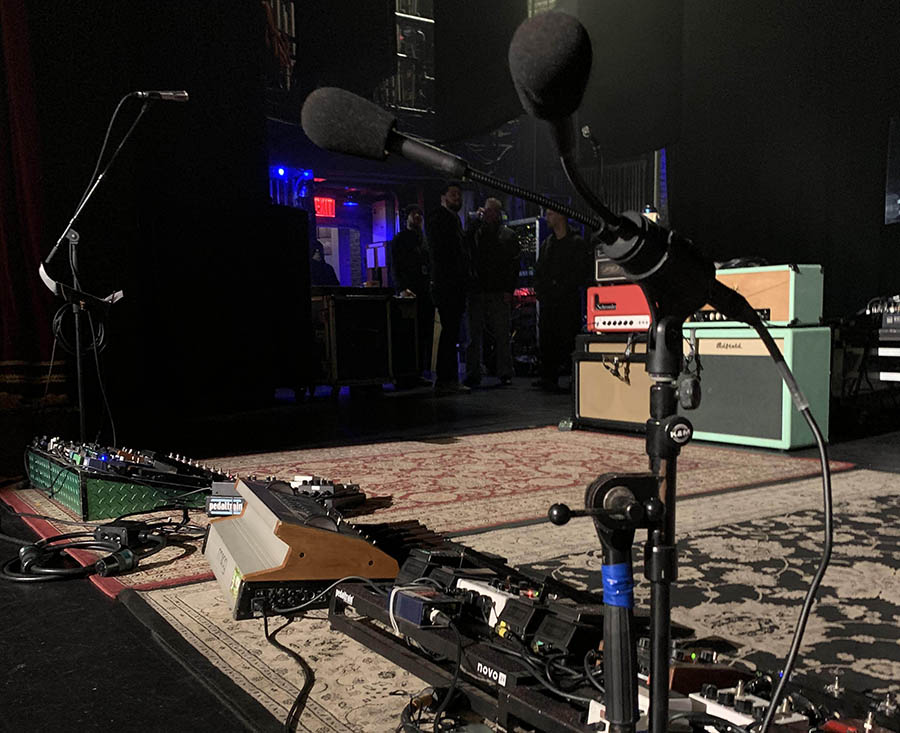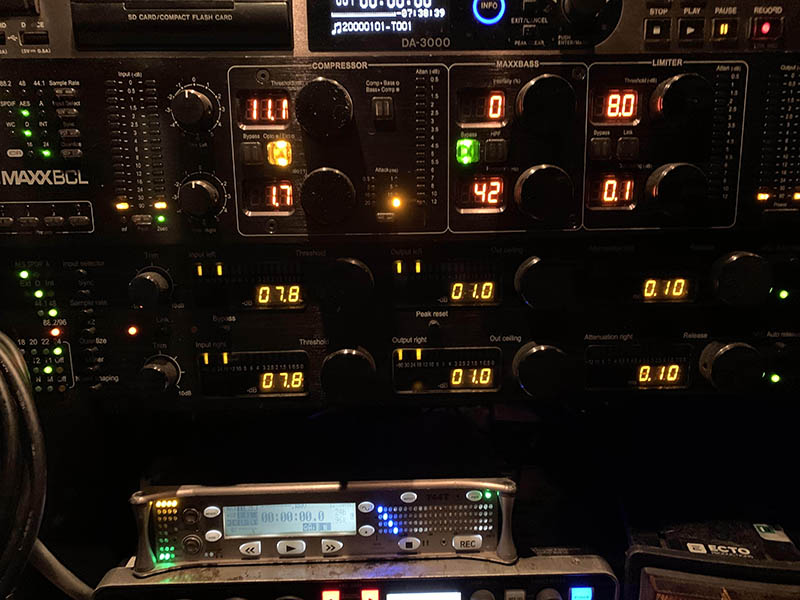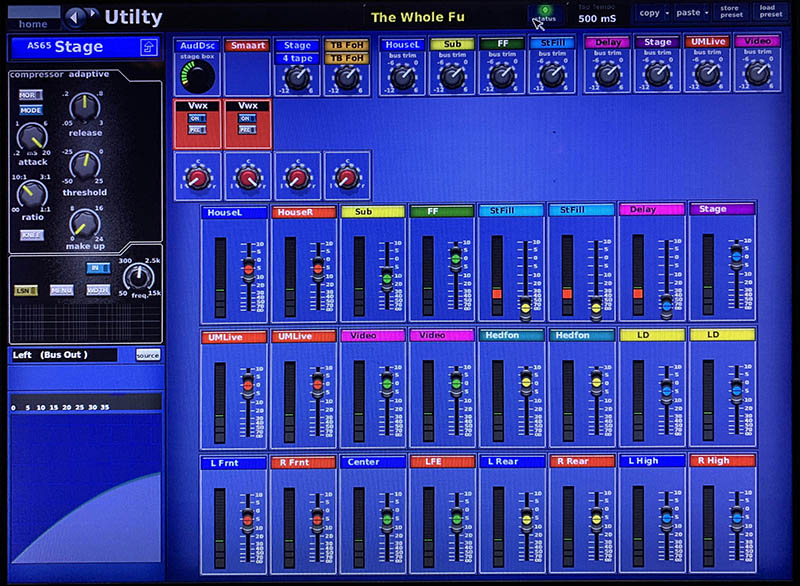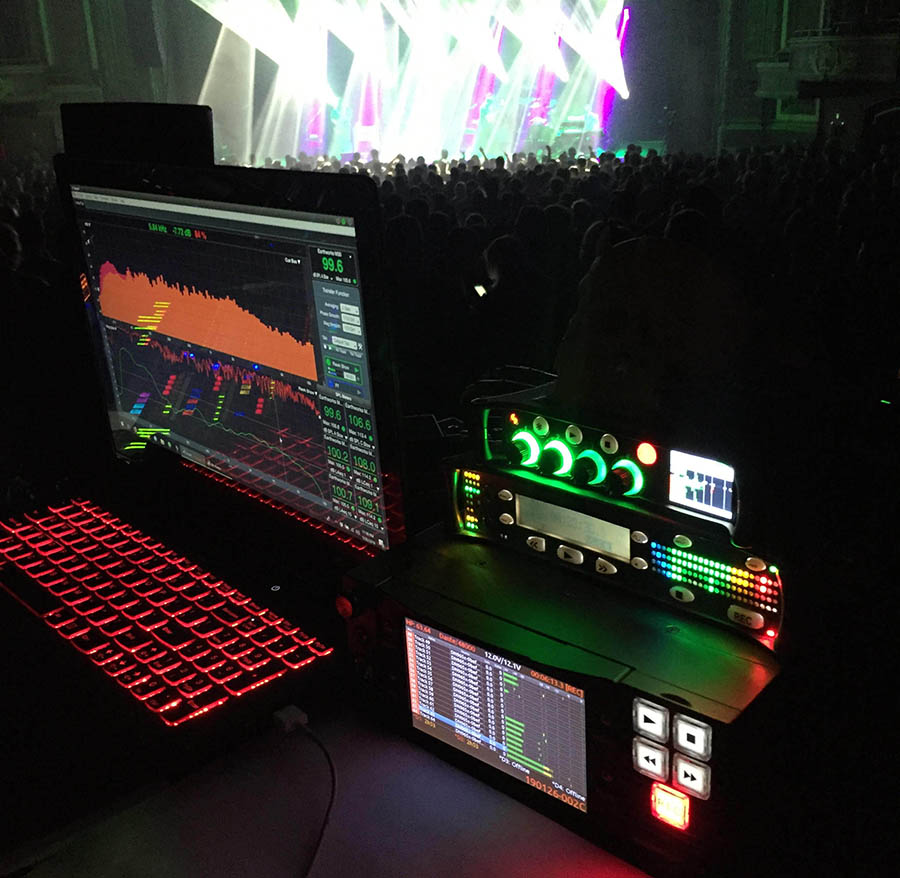In the early days of live sound reinforcement, recording a performance was significantly more complicated than it is today. A few bands carried separate recording gear – extra console, multitrack recorder – but most depended on the simple cassette recorder.
The Grateful Dead hauled a few tons of recording gear around Europe in 1972 and recorded their best live album – the 16-track recorder alone weighed over 1,000 pounds. Now we can capture 32 tracks, directly from our digital mixer, on an SD card the size of a fingernail.
The needs for live recordings are as varied as the artists who make them, from archiving rehearsals for review and practice all the way up to recording live concert albums for release. I’ll review a few different techniques to capture performances, with differing levels of complexity and post show flexibility.
Working It Through
The most straightforward route is to simply record the main mixing bus (pre-processing) by routing it to a 2-track recorder. But depending on stage volume, venue size, and other key factors beyond the engineer’s control, this board mix may not produce satisfactory results. Instruments with loud stage volume might not make it into the mix. Or maybe you cut a bunch of low-mids from the vocals because of a boomy room, and as a result, the vocals may translate as thin on the recording.

Another option is erecting a stereo pair of microphones at front of house and recording from the perspective of the mix engineer. While this works well to capture the performance as it sounds in the room at that precise location, the recording can suffer from poor acoustics and loud crowd noise.
One solution, pioneered by the Grateful Dead crew, merges these techniques into a matrix recording. By combining the console output with a pair of microphones at FOH and adding delay to compensate for the distance to stage, Dan Healy produced some great-sounding live recordings with the proper balance of direct sound and audience ambiance. These were called “UltraMatrix” recordings and they still sound fantastic.
Refining The Process
One of my duties as the FOH engineer for Umphrey’s McGee is to record the band’s live performances for release, providing dedicated fans a chance to experience the music when they cannot attend – in a genre where no two concerts are ever alike – and creating a lucrative secondary revenue stream for each show.
I produce about 90 full show recordings every year and have refined Mr. Healy’s technique to match my mixing style. I do combine the console mix with audience mics, but I prefer to use a pair of stereo condensers in an ORTF (also known as Side-Other-Side) configuration, downstage center, facing the audience. This eliminates the need for delaying the console mix.
I prefer to have audience mic levels rise between songs, to emphasize applause and cheering. I created a ducker using the console mix as the sidechain for the audience mic compressor and set the compressor controls to have 15 to 25 dB of gain reduction on the audience mics when the band is playing hard.

The advantages of utilizing these techniques are simplicity and turnaround time. Each full show recording is usually available to the public within hours of the final note, sometimes minutes if the internet connection is fast enough. The disadvantages may include instrument level issues, imbalances due to stage volume, missed mix cues, improper EQ, etc.
Steps Along The Way
However, there are some modified techniques that allow flexibility in post-production but are faster and more streamlined than recreating a full mix from multitracks. I didn’t know it was called Stem recording when I did it, but in the early days of digital recording, I hauled a new-fangled Alesis ADAT 8-track recorder to a bunch of shows I was mixing for an Americana band.
While touring with them in the late 1990s, most analog consoles I came across had eight group outputs in addition to the stereo output. I was able to create a good mix for the house using just the stereo bus, so I used the eight groups to record three stereo and two mono groups, post fader, to be remixed later in a controlled environment: drums and bass together on stereo group 1 and 2, acoustic guitar on 3, banjo on 4, vocals on 5 and 6, and FOH mics on 7 and 8.
When ready to remix, I had control over the level of these Stems, which were already recorded with EQ, dynamics and fader moves. So if the guitar was low in the live mix, I could properly balance the Stem mix without having to remix the whole show. This technique can easily be adapted to fit the number of recording tracks that are available.

Fast forward to the present: recently I was asked to provide Stem mixes of an Umphrey’s McGee show for a Dolby Atmos project. I created 16 stereo Stems that included six musicians – four who sing – a four-piece horn section, and three pairs of audience mics. We captured the performance using the new Sound Devices 970 recorder, printing 64 tracks of 24/48 digital audio via (Audinate) Dante.
The data is stored on dual solid-state hard drives with multiple stages of redundancy. Those files were sent to the video facility for remixing, and the resulting Atmos mix is amazing. The whole performance, from the soaring of the music to the ballet of my fader moves, was captured with total immersion. The Atmos engineer only had to concentrate on level and spatial placement of those Stems, instead of recreating the mix from 96 raw tracks.
Producing a quality recording of performances and their accompanying mixes is now easier than ever. Creative grouping and routing, combined with the use of ambient microphones placed onstage or at FOH, can result in some stellar live recordings that require little to no post processing.


















